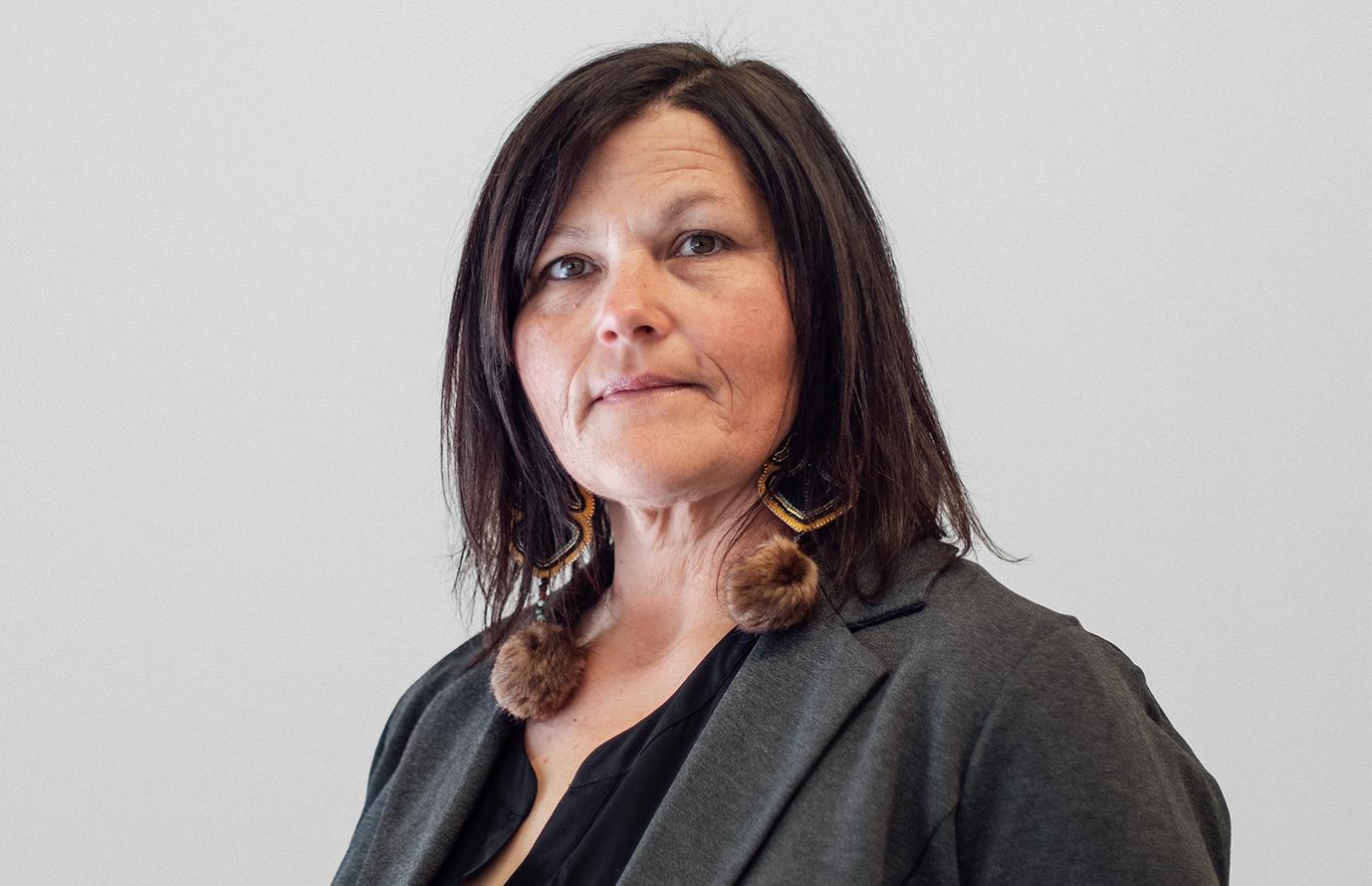
4 minute read
Fisheries – Cheri Frocklage
Fisheries
Director Report
Cheri Frocklage
Fisheries Director Well, admittedly, 2021 was not kinder to us as I had hoped. The spring came in with a vengeance, washing out Highway 51. The community of Telegraph Creek remained in a state of emergency for the better part of the summer. Highway 51 remained closed, with intermittent openings to accommodate for the road conditions and ongoing road repairs. We experienced our first cases of COVID in our community in late July, and we all breathed a sigh of relief when our members recovered. Fall arrived in all its colourful splendors, bringing with it, colder temperatures. Though we are not strangers to the frigid temperatures, the duration of this winter cold snap that we have been in seems to be prolonged, perhaps a symptom of climate change and what will soon become the new normal. Throughout the Christmas break, we found ourselves facing a high number of COVID infection rates, which prevented many of us from enjoying and experiencing our family Christmas traditions.
To read it here, it sounds like a dismal year, right? But we need to step back and find the good amongst the chaos.
When the road washed out, people rallied for the community. Food and supplies were helicoptered in, truckloads of equipment arrived to repair the road, and local people worked endless hours alongside contractors to open and restore it to drivable conditions. Many members did not fish, forgoing their winter food security due to the road closure and ongoing COVID concerns. We adapted and persevered.
When COVID hit our communities, our people rallied for our members, checking in on them, bringing them food, brewing them medicine, practicing safe COVID protocols to protect our Elders and the immune compromised, and praying for their recovery. We adapted and persevered.
Our Chinook stocks showed a welcomed and promising increase in numbers, our sockeye stocks came in stronger than was originally forecasted. The Stikine River salmon have evolved over thousands of years, through glacial activity, catastrophic events, through landslides that blocked and restricted access, through human interference and over exploitation and they remain.
They adapted and they persevered. And we shall too. We are Tahltan people. We have a full vibrant history of our ancestors, who also adapted, persevered, and overcame the adversities presented before them. We are a living testament to those who came before us, and those that will follow us.
As we head into the New Year 2022, I am not hoping that the year will be kinder; instead, I ask that we all do our best to be a little kinder to not only one another, but to ourselves.
We are in year three of a global pandemic. We are learning as we go. We are all showing up to our lives and jobs to the best of our abilities every day. We are doing our best. And this, is enough. Do your best, be your best despite all the uncertainty. Life will go on, and if we do our best now, we will be in a much better place when we step into the light after all this darkness. We are tired, we are weary, but we will persevere. Stay the course.
Your Tahltan Fisheries Department staff are currently busy drafting written and financial reports from the 2021 field season. We are working our way through the post season reviews, meeting schedules and discussions which are still ongoing. Stikine run forecasts for 2022 will be available following the February Pacific Salmon Commission session.
2021 STIKINE RIVER SALMON RETURNS
Chinook
Pre-season forecast was 9,900 and the actual system wide escapement was estimated at 8,376 large Chinook. The 10-year average escapement is 18,600. Little Tahltan River Chinook escapement is estimated at 1,471 adults (987 large and 484 jacks) which is a significant improvement over the recent 10-year average of 677 adults.
Sockeye

Preseason forecast was 56,000 comprised of 28,000 Tahltan Lake and 28,000 Mainstem River spawners. Tahltan Lake escapement was 43,246 and mainstem estimate is 30,447. Canada harvested 4,705 sockeye (Food fishery 4,094 and coho commercial incidental catch 611) and the US harvested 5,441 Stikine bound sockeye salmon (2,636 Tahltan Lake and 2,805 Mainstem). The 2021 Stikine sockeye terminal run sizes are estimated at 49,950 Tahltan Lake and 33,889 mainstem which is well above both the preseason forecasts. The Tahltan Lake smolt count of 1.86 Million was comprised of 70% enhanced and 30% wild smolts, which is a markable improvement over last year’s 81% enhanced vs. 19% wild production.
Natural spawning is estimated as follows – 43,246 total escapements at the weir, minus brood stock for egg take (1,152) = 42,094. Presuming 50% are female, 21,047 wild female spawners @ 2,529 eggs/female (fecundity), deposited 53,227,863 eggs into the gravels at Tahltan Lake.
Currently, there are 1,245,385 surviving Tahltan Lake sockeye eyed eggs (eggs that have developed to the stage where you can distinctly see the eye of the salmon within the egg) from the 1.52 million eggs delivered, incubating at the Port Snettisham Hatchery. They will be thermally marked and will be released back to Tahltan Lake in the spring of 2022 after ice-out. Green to eyed egg survival rate is estimated at 85.5%, comparable to the historical average of 85%.
Above: Eyed sockeye salmon eggs.










